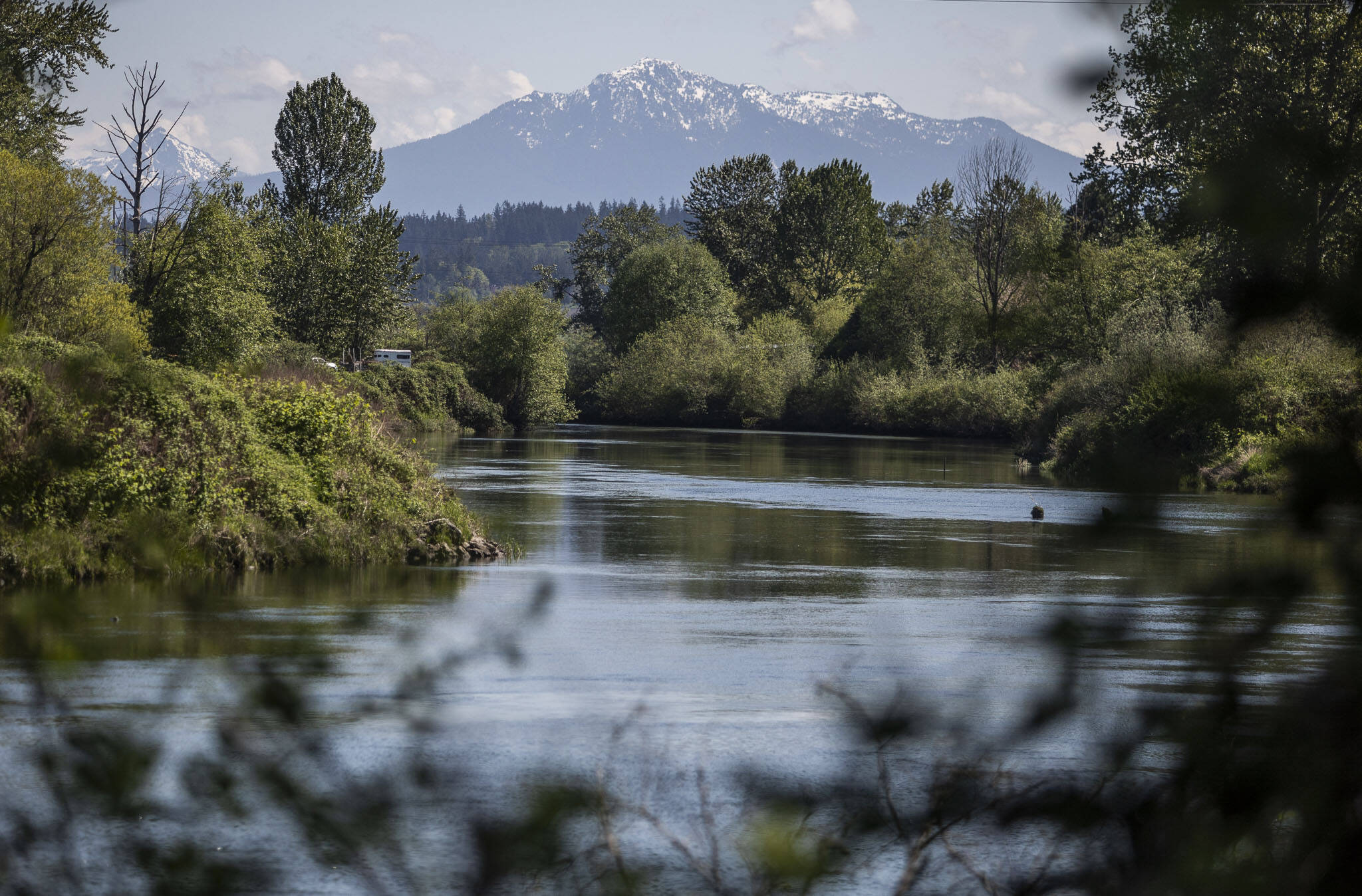EVERETT — Precipitation was down over the past year statewide, though local reservoirs, including Spada Lake, are mostly full as summer approaches.
Washington had a dry fall and soil was not fully saturated when it got cold. This leads to delayed snowmelt in streams, as water seeps into soil before it flows to streams and rivers.
Statewide precipitation was 86% of normal, according to the state Department of Ecology. Heat waves in recent years have led to a quicker loss in snowpack.
“The soil has to saturate before that snow melt can start generating streamflow,” Jeff Marti, drought coordinator with the Washington state Department of Ecology said. “If you have really dry soils coming into springtime, it means your snowmelt response is delayed and somewhat reduced because the soil is thirsty for water and it’s first in line.”
Spada Lake serves 640,000 people in Snohomish County and is 86% of normal storage. As of May 2, there were approximately 31.5 billion gallons of water in the reservoir. At full storage capacity, it holds 50 billion gallons.
Current snowpack in the Cascades, which feed Spada, overall is good. The U.S. Department of Agriculture tracks snowpack by regions, and in the Central Puget Sound area, snowpack is 96% of the 1981 to 2010 average. The years since have been historic outliers — and this is actually a very good snowpack relative to the past decade or so.
Some snow is expected to melt this weekend when Western Washington is expected to have weather in the 80s and 90s.
As the climate gets hotter and the heat comes earlier in the year, it can lead to lower snowpack in the summer and fall.
“Ideally you’d like your snow to melt slowly, so the snowmelt lasts longer through the summers and sustains your streamflow rather than it running off in a short period of time,” Marti said. “If you spend it all early in the summer and in springtime, you have less available for later in the summer and fall.”
Quick melts can lead to flooding. Flood gauges in Snohomish County show normal river conditions heading into the weekend and warmer weather.
Wetlands naturally store floodwater and help negate these impacts, but are threatened. Human intervention, including levees and dams, has changed the amount of water some wetlands are able to store.
Most of Puget Sound’s remaining tidal wetlands are in Snohomish and Skagit County, where numerous restoration efforts are ongoing, including: Chinook Marsh in Snohomish County, Spencer Island, and work in the Stillaguamish River Delta among others.
“When you restore wetlands, you’re building sponges,” Marti said. “Those wintertime and springtime flows, rather than taking the express route to the sound, they spend some time hanging out in the wetland.”
Balancing the environment, hydroelectric power and the water supply will cause communities to face tough decisions in the future, Marti said.
Sixty-five dams were removed across the country in 2022, largely for environmental reasons, according to a report by the nonprofit American Rivers. Some dams, like the Culmback Dam at Spada Lake, seek to imitate seasonal water flows and contain fish passages.
“There’s a lot of rivers that don’t have dams, don’t have storage,” Marti said. “That’s going to be quite the puzzle to figure out. Because storage on one hand can mean a new dam or a new reservoir. But, of course, that has environmental effects all of its own. They’re expensive, they’re controversial.”
Snowmelt impacts energy operations at Spada Lake as well.
“The changing timeline of snowmelt does alter when we expect hydroelectric generation,” said Aaron Swaney, a spokesperson for the Snohomish County Public Utility District. “For example, delayed snowmelt can mean less hydroelectric generation in the early spring and more in the summer and fall. We are always prepared for changing forecasts, from weather patterns to market fluctuations.”
One alternative to damming rivers could be underground water storage, possibly using rainfall stored in winter, Marti said. Off-channel storage projects, where water is diverted to the side of the river, could be an option as well.
And people may have to change their water use habits, too.
“We’re also going to have to look at things on the demand side of the equation,” Marti said. “What can we do to change how we use the water so we can get by with less of it?”
Jordan Hansen: 425-339-3046; jordan.hansen@heraldnet.com; Twitter: @jordyhansen.
Talk to us
> Give us your news tips.
> Send us a letter to the editor.
> More Herald contact information.

























